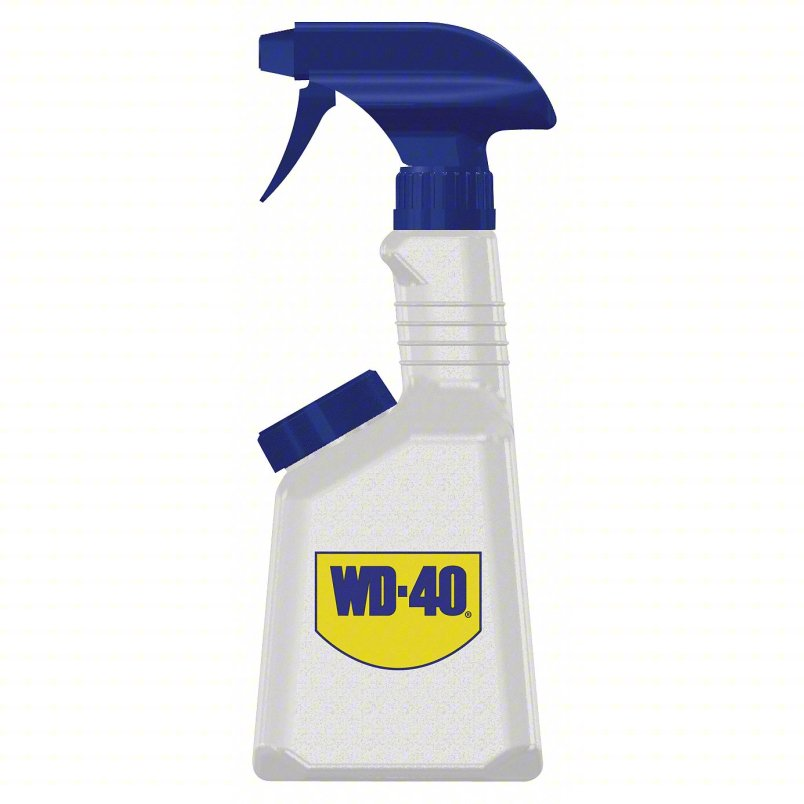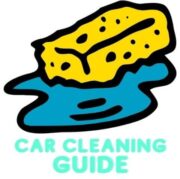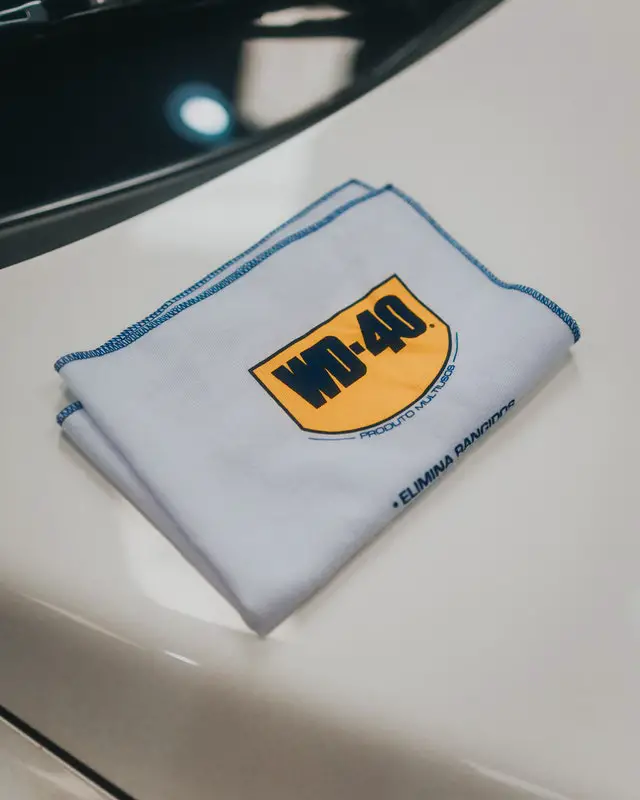Last Updated on September 22, 2023 by Chase Manhattan
WD-40, or water displacement 40, is the holy grail of rust removers, degreasers, and lubricants. Every mechanic and DIY car repair enthusiast use WD-40 in their work area because it’s a multi use product that comes in handy in a variety of situations. It can displace water, clean sensors and solenoids, prevent rust, and it is non toxic, and relatively environmentally friendly.
What happens when you don’t have it on hand? You make do with what you have. So that brings us to the question:
Are there substitutes for WD-40?
In my experience, there are many wd40 substitutes that can be used in a pinch.
Best WD40 Alternatives for Car Use
- Petroleum Jelly
- Petroleum-Free Jelly
- Beeswax Bars
- DIY Lubricant
- Vegetable Oil & Acetone
- Multi Purpose Oil
- Plumbers Grease
- Dry Film Lubricant
- Rust Removers
- AC-90
- Motor Oil
- Automatic Transmission Fluid
- Extra Virgin Olive Oil
WD-40 is a product with a wide range of applications. However, the alternatives to WD-40 are not like that. Each substitute has a specific use. From store bought and household products alike, we’ll go over how they can be used.
Otherwise, if you appreciate substitutes for traditional chemicals, I recommend you check out our guide for making homemade car wash soap.
But first.. I recommend checking out this pros and cons overview table for each of the alternatives I cover below:
| Product | Pros | Cons |
|---|---|---|
| Petroleum Jelly | - Moisturizes joints and sore muscles - Prevents rust on metal parts | - Not suitable for use on car paint |
| Petroleum-Free Jelly | - Suitable for use on car paint - Stops rust from spreading | - Not effective for curing rust spots |
| Beeswax Bars | - Wide range of applications, similar to WD40 - Safe to use on car paint | - Not as effective for treating severe rust spots |
| DIY Lubricant | - Customizable with different oils - Can be effective as a penetrating lubricant | - Acetone can damage car paint - Oil base may leave stains |
| Extra Virgin Olive Oil | - Eco-friendly and natural lubricant - Safe for car paint | - Lower smoke point, not suitable for high-temperature applications |
| Mineral Oil | - Odorless, colorless, and non-toxic lubricant - Prevents rust on metal | - Not suitable for high-temperature applications |
| Vegetable Oil & Acetone | - Homemade WD40 alternative - Can be effective as a penetrating lubricant - Prevents rust | - Acetone can damage car paint - Oil base may leave stains |
| Multi-Purpose Oil | - Displaces moisture and prevents rust - Can be used on car paint - Effective for tight spaces | - Not as thick as other lubricants |
| Plumber's Grease | - Excellent lubricant for metal parts - Good for rust prevention | - Not suitable for use on car paint - Sticky and may collect dirt on exposed parts |
| Dry Lube Spray | - Acts as a dry film lubricant - Effective for rust prevention | - Not suitable for use on car paint - Some may not prevent rust as effectively as traditional WD-40 |
| Rust Removers | - Specialized for rust treatment - Can be used on cars and other surfaces | - Some may not be suitable for use on car paint |
| AC-90 | - Similar properties to WD-40 - Cheaper alternative to WD-40 | - Not as commonly found in garages |
[Can You Wash Your Car With Dawn Dish Soap?]
Quick Navigation
The Best WD40 Alternatives
Petroleum Jelly

Commonly known as vaseline, petroleum jelly is a petroleum oil based lubricant that can moisturize joints and sore muscles, and also prevent any rust on metal parts. It was originally made as a skin ointment to treat cracked skin but has become a multi use product over time.
However petroleum jelly can be used on cars and in households as well. Do you have a rusty part that you want to lubricate? Well, petroleum jelly can be your WD40 alternative instead of another commercial product.
It’s a good lubricant on car hinges or for loosening stiff locks. If your car door is hard to open and squeaks when opened, you can use it to lubricate the hinge.
Petroleum jelly should not be used on car paint though. The petroleum can damage the paint, so it’s best to avoid using it on car paint.
[How to Fix a Rusty Exhaust Pipe]
Non Petroleum Jelly

If you want to avoid petroleum-based products, you can try petroleum-free jelly. This is a product that was made for use on baby skin, or dry skin for adults with sensitive skin. It is designed with this in mind so it is free from petroleum distillates making it an effective multi use product.
The good thing about it is you can use it on car paint without damaging the paint job. It’s a good way to stop rust from spreading.
You can treat minor rust spots and bubbling car paint with petroleum-free jelly. Although this will not cure the rust spot, it will stop it from spreading.
And, it can be used on door hinges as well. Same as petroleum-based jelly. In the same way, it is a suitable WD40 replacement.
[The Exhaustive Guide to Washing Your Car Without A Hose]
Beeswax Bars

A really good alternative to WD40 is beeswax bars. It has a wide range of applications, the same as WD40.
In fact, beeswax is used in many car wax products. It helps the wax stick to the car paint, and most importantly, it lubricates the paint and forms a protective layer.
So, you can use it on your car without any worries about causing damage. I recommend using it like you would other dry film lubricants. This means you can use it on a door hinge, a squeaky garage door, stuck locks, other moving parts, and non-engine parts that need lubrication.
It’s good for treating rust spots too. You can stop the rust from spreading by gently applying beeswax.
[Best Way to Remove Leaf Stains From a Car’s Paint Job]
DIY Lubricant
You can easily make a homemade alternative to a commercial type product. All you need is a type of oil and acetone. You can use any petroleum based oil, silicone oil, or mineral oil. You can also use extra virgin olive oil, regular olive oil, or other cooking oils. The oil acts as a lubricant and the acetone, when added, prevents it from staining the paint.
I don’t recommend using it on car paint; because, acetone is a strong acid that can damage the paint. More importantly, the oil or liquid base will leave a stain that’s hard to get rid of.
This also applies to motor oil and automatic transmission fluid; they will achieve similar results with regular application, but should not be used directly on the paint of a car.
These, and similar products, will stop squeaks and lubricate items from plumbing fixtures, garden tools, garage doors, and other surfaces. The most important thing being that extra lubrication makes it a lot easier to reduce friction between surfaces. Key word here is to lubricate, I recommend primarily using this on metal type surfaces – never on car paint.
This is a benefit of any homemade lubricant, you know exactly what is going into it as opposed to commercial lubricants or other substitutes.
DIY lubricant is good to use on car door hinges or non-engine squeaky parts.
[How to Remove Bird Droppings From Car Paint]
Extra Virgin Olive Oil (DIY Lube Option #1)
Extra virgin olive oil is an excellent natural lubricant. To create this eco-friendly solution, simply mix two parts extra virgin olive oil with one part white vinegar in a spray bottle. The olive oil provides the necessary lubrication for moving parts, while the vinegar acts as a cleaning agent, dissolving rust and grime. This homemade concoction is ideal for use on door hinges, bike chains, and other metal parts that require lubrication. It is important to note that extra virgin olive oil has a lower smoke point than other oils, so it should not be used in high-temperature applications.
Mineral Oil (DIY Lube Option #2)
Mineral oil is another effective homemade alternative to WD-40. Mineral oil is an odorless, colorless, and non-toxic lubricant that is perfect for a variety of applications. To make this alternative, simply pour pure mineral oil into a spray bottle or applicator of your choice. Mineral oil can be used to lubricate door hinges, bicycle chains, and other metal parts that require smooth movement. Additionally, it can prevent rust by forming a protective barrier on the surface of the metal. This easy-to-make solution provides a cost-effective and readily available option for those in need of a lubricant without the harsh chemicals found in traditional WD-40.
Vegetable Oil & Acetone
Now, vegetable oil mixed with acetone is homemade WD40. If you were wondering if there is a way to make WD40 at home, this is the way to go.
Making your own WD40 alternative is a great idea because it will save you money in the long term. It will work like WD40 to loosen rusted parts, prevent rust in the first place, and prevent exposure to any chemical additives.
By mixing vegetable oil, olive oil, or some other cooking oil, with acetone in a 90:10 ratio you successfully make an acetone mixture, that will remove rust, at home. Again, this is a type of homemade lubricant. It’s best used on non-vital metal parts. Homemade products like this are thin so they will not collect dirt like other silicone grease products like plumber’s grease, but will still act as a penetrating lubricant.
Dont use cooking oil based lubricants, or another oil product on the paint; you will damage it.
Multi-Purpose Oil

Now, this substitute for WD-40 is basically liquid gold. Many people use squeeze bottle oil based products, mineral spirits, or penetrating oil like this one to lubricate their power tools, or to act as a substitute for gun oil.
It displaces moisture, and is good at preventing rust, like other alternatives and is not highly flammable like some of the other products. Given that it is one of many squeezable oil based products, it is great for adding lubricants to tight spaces.
But if you often buy dedicated products for car cleaning and car maintenance, you may have multi purpose oil in your garage. If you run out of WD40, you can replace it with squeezable oil products like this one.
Multi-purpose oil is mostly used to clean grime off cars. It is not a thick oil when compared to other oil based products, which is important because a certain viscosity is necessary for the oil to penetrate hard to reach areas and metal surfaces. It can lubricate moving parts and give them a higher level of rust resistance.
That’s why it’s such a good WD40 substitute. It can do everything WD40 does.
The best thing about multi-purpose oil is that it can be used on car paint. So, unlike the other substitutes, you can use it to remove grime and rust from car paint. Unlike other silicone based products it is not sticky and will not collect dirt or other debris.
Do note that mineral oil products are packaged similarly and may not have the same effect if used on car paint, so be careful.
[Answered: What Do You Do About Bubbling Car Paint?]
Plumber’s Grease

If you have a plumber’s grease on hand, you can use it as an alternative to WD40. Plumbers use this dedicated squeezing oil in place of lithium grease to loosen up or lubricate O-rings. It’s probably the best lubricant we’ll cover here.
Silicone based products like plumber’s grease are a great lubricant for metal parts. So, you can use it to lubricate door hinges or loosen up lug nuts that are hard to unscrew and prevent rust at the same time.
Silicone grease is a good permanent solution because it is sticky enough to remain on the surface. This often applies to most silicone based products but can vary from each one.
Don’t use the plumber’s grease on car paint. Although it won’t damage it, it will leave a stain. It may also cause streaking.
There’s no danger in using it on a squeaky hinge, rusty screws, or other metal joints. Do note that silicone grease based lubricants are a bit sticky and will collect dirt when used on moving or exposed parts.
Dry Lube Spray (Direct WD40 Substitute)

WD-40 is basically dry lube, also known as dry film lubricants, or another form of penetrating oil. In fact WD-40 has a specialized dry lube product that comes in spray cans, but could also be considered a silicone spray because silicone spray works the same way as WD-40 and dry lube.
In case you have any of these on hand, use the lube spray as you use WD40. If your nearby hardware store doesn’t have any WD-40, consider using another dry lube spray alternative.
Do note that Trick Shot is primarily a penetrant oil, without compressed chemical additives, that will prevent the build up of rust when used over the long term but it can also be used to lubricate power tools.
For anyone who lives in the north, or drives a classic car, rust prevention is very important. Penetrating oil, also known as liquid wrench, acts as an effective lubricant for stuck zippers, metal surfaces, rusted bolts, bike chains, and metal joints.
You can also use it fix a squeaky door hinge,metal joints, a garage door, for loosening stiff locks, or for lubricating other moving parts while also serving as a rust preventative for the stuck metal joint, but would not recommend you use it on car paint like other wd40 alternatives.
Rust Removers

There are plenty of car rust remover products that you can find in stores and online. These can be used instead of using WD-40 for rust treating a car. They also happen to be quite the trade secret in the automotive restoration industry but also one of the less flexible wd40 alternatives.
The remover can be used to help you with a rusty lug nut, treat car paint rust spreading, and to fix squeaky door hinges.
You may also have a rust remover at home but not one dedicated for cars, one for household use. You can also this to substitute WD40.
Don’t use it on car paint if you are not sure that it can’t be used on car paint. The product should have instructions on the spray bottle. If you must use it on car paint, I would suggest using another one of the wd40 alternatives listed here.
AC-90
Some people prefer using AC-90 instead of using WD-40. AC-90 is a competitor to WD-40. It does everything WD-40 does because they have similar properties.
It’s basically the same product but from a different brand. It’s not something car owners usually have in their garage. But if you don’t like WD-40, try using AC-90, it’s a cheaper alternative to WD40.
content continues below
Recommended Reads:
Why Choose a WD-40 Alternative
Unknown to most, WD-40 uses hydrogen and carbon components as a propellant for the spray; more specifically, carbon dioxide.
Along with this, people tend to worry about the contents of canned air otherwise. They will choose to use squeezable oil products instead.
Othertimes, for a WD-40 brand loyalist, the WD-40 with a spray form dispenser is an option. This is a direct spray nozzle that does not use hydrogen and carbon components, or any other materials found commonly in canned air, as a propellant.

While spray form bottles do not have a pointed nozzle, many people opt to apply the product first to a clean rag or q tip and then apply it to the surface.
Here’s a video overviewing some of the best penetrating oil alternatives for WD-40, along with other alternatives specifically for car use:
Related Questions And Other FAQs
Can You Use WD40 As A Lubricant
WD40 is used to lubricate some parts but it’s not mainly a lubricant. The lubrication helps to loosen up screws and treat rust. However, it’s not as effective at lubricating parts as dedicated lubricants are. WD40 is primarily a solvent which will remove other forms of lubrication.
What Should You Not Use WD40 On
WD40 should not be used on brakes or other important surfaces that make contact with each other. It should not be used on sealing metal surfaces with gaskets or o-rings.
What is the History of WD40
WD-40 was actually developed in the aerospace industry; more specifically, a rocket chemical company. This company designed WD-40 to protect from rust and corrosion.
Who Used WD-40 First
After WD-40 was designed by a rocket chemical company, the first commercial use was by Convair, which used it to protect the outer skin of their Atlas Missile.

